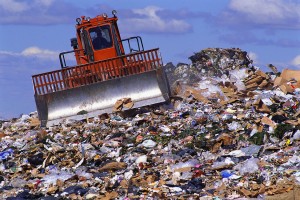 By taking a look at utility usage and reducing its impact, you are in essence starting a sustainability program by reducing the use of natural resources and eliminating waste. Once you see that this is the beginning of that type of program, you can then take a look at another problem like waste and see what can be done about that. It has always been good economics to reduce waste. We know from the generation that grew up in the great depression, everything got used. One tried to waste very little. Ham bones became the ingredient for making soup stock. Soup was then the next meal the family ate. Now we tend to throw away those bones creating more waste.
By taking a look at utility usage and reducing its impact, you are in essence starting a sustainability program by reducing the use of natural resources and eliminating waste. Once you see that this is the beginning of that type of program, you can then take a look at another problem like waste and see what can be done about that. It has always been good economics to reduce waste. We know from the generation that grew up in the great depression, everything got used. One tried to waste very little. Ham bones became the ingredient for making soup stock. Soup was then the next meal the family ate. Now we tend to throw away those bones creating more waste.
Frugality transfers well to sustainability. Eliminating waste reduces costs, and uses up material thereby reducing what we throw away. Personally, I look around at some minor things that I do to reduce waste. This starts the creation of a mind set to reduce waste and be more mindful of what gets thrown away. For example, by using a lipstick brush, I am able to get to the very last bit of my lipstick out of the tube. This reduces the number of tubes I throw away a year and the amount of money I am spending on this product. The drawback, I might not be as up-to-date with my color choices as some of my colleagues, but I am ok with that. I am willing to give up some style to save money and reduce waste.
While this example is small, it helps to show the importance of our behavior and how we look at the way we use products and the packaging. How much waste is in the bottom of a lipstick tube? How much energy does it take to make that much product? How much space is it taking up in our landfills? What is the by-product of this waste? How is the product being used? These are the important questions we need to ask ourselves as consumers, marketers and as business leaders.


